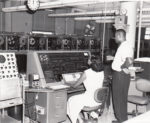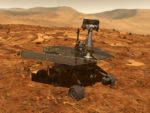A big step is taken towards automated computation, the first commercial computer is unveiled and NASA begins its Mars Exploration Rover Mission… It all happened This Week in Tech History.
This week in 1887 – US Inventor Herman Hollerith submitted his patent application for the ‘Art of Compiling Statistics’, which was his punched card calculator. This machine was a big step towards automated computation. His company originally did business under the name The Hollerith Electric Tabulating System, specializing in punched card data processing equipment. The company joined three others in 1911 to become the Computing-Tabulating-Recording Company. That company was renamed in 1924 and became IBM. Believe it or not, the punch cards and machines Hollerith came up with to read them are still in use in some parts of the world – and were front stage during the 2000 presidential election and the “hanging chad” debacle.
1951 – UNIVAC I, the first commercial computer produced in the US, was unveiled in Washington, DC. The first UNIVAC I was used by the U.S. Census Bureau. Originally priced at $159,000, the UNIVAC I rose in price until they were between $1.2 and $1.5 million dollars. A total of 46 systems were eventually built and delivered. As a way to promote sales, UNIVAC’s manufacturer partnered with CBS to use the machine to predict the result of the 1952 presidential election. With just a 1% sample, the computer was able to predict a landslide victory for Dwight Eisenhower. The CBS crew was so certain that UNIVAC was wrong that they pretended it was not working. As the election continued and it became clear it was correct all along, the announcer admitted their sleight of hand and the machine became famous.
And this week in 2003 – The Spirit rover was launched, beginning NASA’s Mars Exploration Rover mission. Nearly seven months later, the rover arrived at the red planet and landed successfully. The Spirit Rover’s mission was expected to last about 92 Earth days but ended up going a little longer than that. It was only when Spirit got stuck in a sand trap at an angle that hampered solar recharging of its batteries that it’s mission was finally halted – 5 years, 3 months and 27 days after landing. An interesting side note: a part of Spirit’s rock abrasion tool was made with aluminum that was recovered from the site of the World Trade Center towers.




